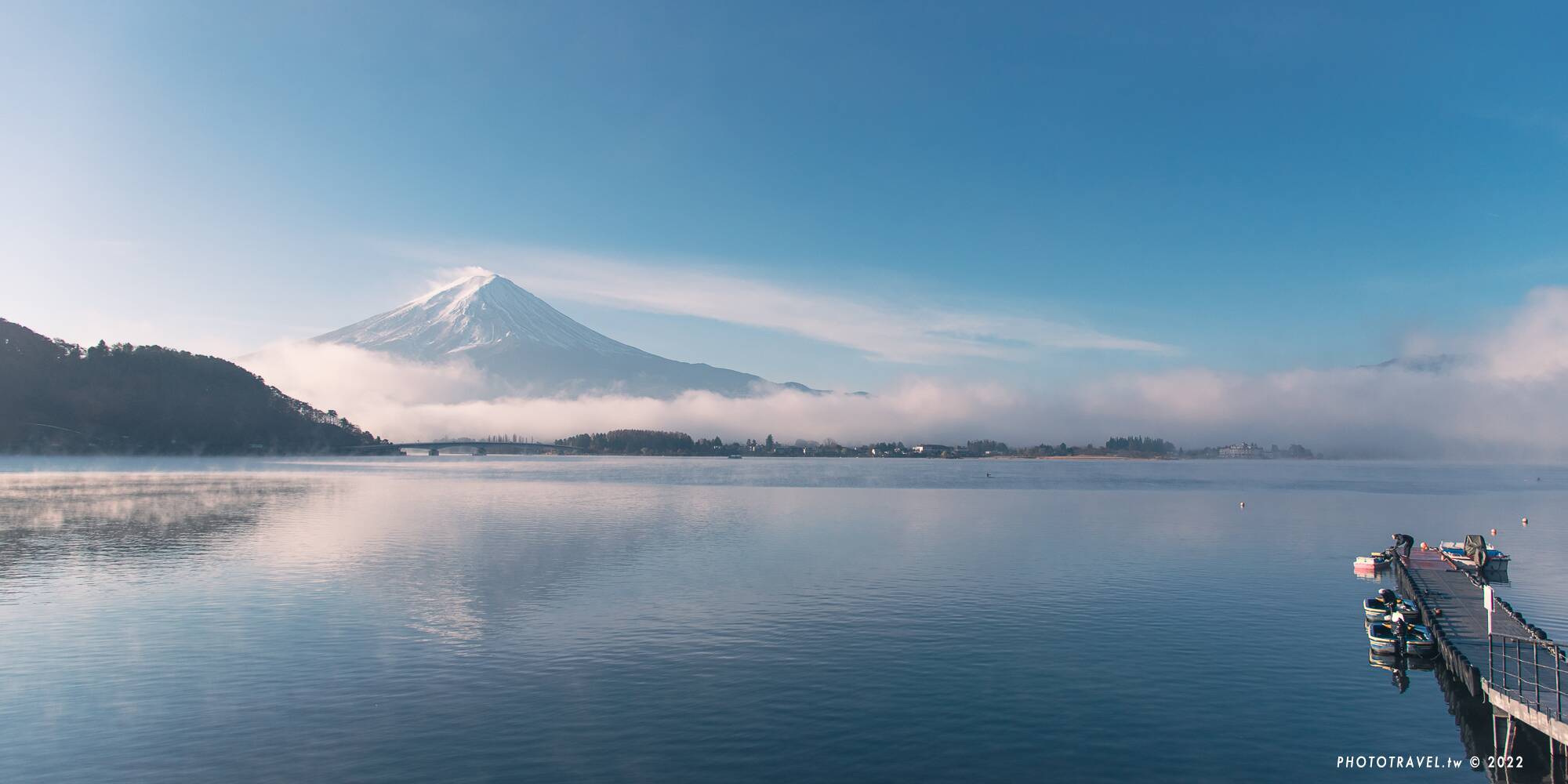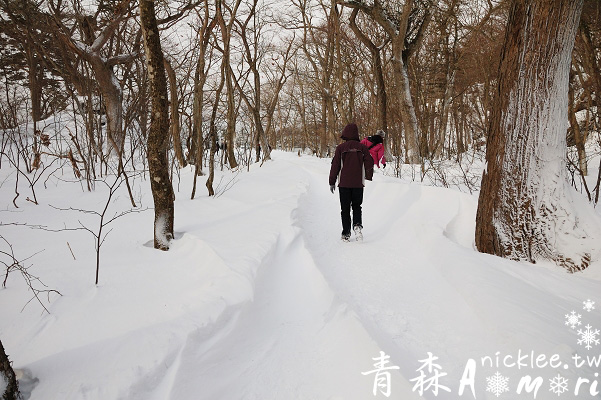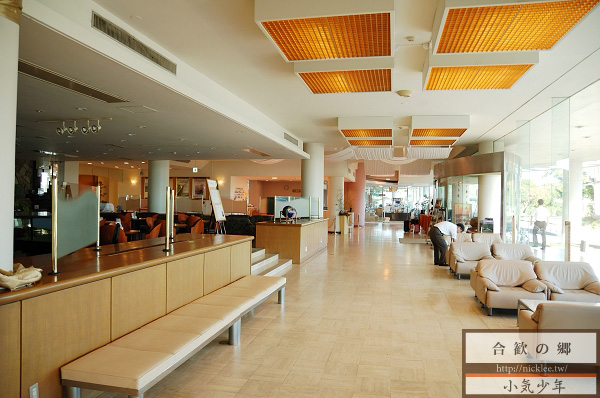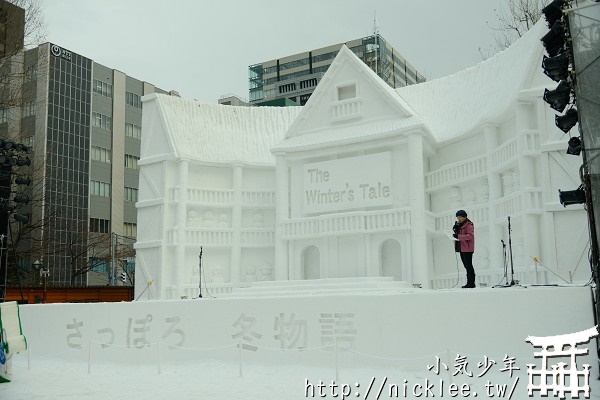Summary
Japan is only a 2-4 hour flight from Taiwan, making it the top choice for Taiwanese people to travel abroad due to its geographical and transportation factors. Before the pandemic, the number of Taiwanese people traveling to Japan exceeded 4 million people per year, demonstrating the level of enthusiasm for traveling to Japan. In this article, Philos will share his past experiences of traveling to Japan freely, focusing on popular cities such as Tokyo, Osaka, Kyoto, as well as Nagoya and the Hokuriku region that have become popular in recent years. This article aims to provide itinerary planning references for friends who want to travel freely in Japan.
Philos’ Travel Notes
Japan is one of the top three destinations for Taiwanese people to travel freely! If it’s your first time visiting Japan and experiencing Self-guided tour, there’s no need to worry too much. You can choose to visit larger cities first, such as Tokyo, Osaka, Kyoto, etc. Firstly, these cities have well-developed transportation infrastructure, providing more flexibility in itinerary planning and movement. Secondly, there is more information available on search engines about attractions and travel recommendations, so you don’t have to worry too much about transportation, accommodation, and other issues.
Choosing Cities and Locations for Self-guided Tour in Japan 2023

If you want to travel freely in Japan, the Kanto and Kansai regions are highly recommended for beginners. Both regions are very convenient in terms of transportation and accommodation, and most tourist attractions can be easily reached by public transportation.
The Kanto region includes Tokyo, the favorite city for Taiwanese people traveling to Japan, as well as surrounding cities such as Yokohama and Chiba, and nearby tourist destinations like Fuji Five Lakes and Karuizawa. The Kansai region, on the other hand, is centered around Osaka, with nearby cities such as Kyoto, Nara, and Kobe as part of the self-guided Tour itinerary. In recent years, the Chubu and Hokuriku regions, including Nagoya and Shirakawa-go, have also become popular choices for Taiwanese people traveling to Japan due to their unique travel experiences that are different from big cities.
As for places like Hokkaido and Okinawa, although they are also popular destinations for Taiwanese people to travel to Japan, they may not be suitable for beginners due to the difficulty of self-guided tour (some places require self-driving). Therefore, they will not be covered in this article.
Recommended Duration for Self-guided Tour in Japan

Strictly speaking, there is no standard answer to this question. It depends on each person’s travel budget and the amount of time they can take off. Generally, a basic duration of five days and four nights is recommended, and the duration can be adjusted based on the places you want to visit during the trip. For Philos, all three Osaka-Kyoto self-guided tours were arranged for five days and four nights, while the Tokyo trip included a visit to the nearby Lake Kawaguchi, so the duration was seven days and six nights. As for the Chubu region, it is recommended to allocate a longer travel duration due to the longer travel time required for transportation.
Preparations for Planning a Self-guided Tour in Japan
Although many people think that traveling abroad should be relaxing and leisurely, it is still beneficial to plan the itinerary and transportation in advance. This not only makes the process of self-guided tour in Japan smoother, but also saves a lot of travel expenses and transportation time, allowing you to enjoy the pleasure of traveling to the fullest.
Tools for Planning a Self-guided Tour in Japan
When it comes to itinerary planning tools, I make good use of two cloud-based tools provided by Google. One of them is “Google Sheets” as a tool for planning itineraries and taking notes for self-guided tour in Japan. The advantage of using cloud-based spreadsheets is that you can edit them anytime, anywhere, and you can also use the mobile version of the spreadsheet app to view the itinerary during the trip. If you are interested, you can refer to my itinerary arrangement Google Sheets. (Feel free to download a copy of the spreadsheet for personal use, but please do not distribute it on personal blogs or platforms without permission.)

Purchasing Local Internet/WiFi Sharers in Japan
Purchase Japan eSIM Card Online
Purchase Japan Physical SIM Card
Japan 4G WiFi Sharer – Unlimited Data (Pick up in Japan)
KarDear Japan 4G Unlimited Data SIM Card
[KLOOK eSIM] Japan 4G Virtual SIM Card
Another useful tool provided by Google is the well-known Google Maps, which allows you to search for the locations of attractions in Japan and the relative distances between attractions. Furthermore, you can make good use of the built-in “My Maps” feature provided by Google, where you can mark the attractions, restaurants, stations, and accommodation locations you want to visit in advance. You can even use different symbols for marking, making it a very useful planning tool.
Recommended Transportation Tickets and Transportation Information for Traveling in Japan
When it comes to transportation planning for traveling in Japan, if you are planning to stay in the same region for more than 3 days, I highly recommend purchasing transportation passes, which can save you a lot of transportation costs!

For public transportation inquiries, I personally highly recommend Japan Yahoo’s “乘換案內” (Jorudan), a platform where you can enter your departure and destination conditions, as well as the desired departure time, and the system will automatically suggest the shortest route for you. You can also set conditions according to your own needs (e.g. prioritize cost savings) to find suitable transportation options. Jorudan is available on both the computer version and as a downloadable app, and I recommend downloading and using it before your trip for convenient search. (However, the app is currently only available on the Japanese version of app platforms. If you need to download it, you can apply for a Japanese version account to download it.)

Choosing Airlines for Traveling to Japan
There are many airlines that fly to Japan, including local airlines such as China Airlines, EVA Air, and Starlux Airlines; Japanese airlines such as ANA and Japan Airlines; and budget airlines such as Tigerair Taiwan and Peach Aviation. The choice of airline depends on personal budget and departure time, as the flight time to Japan is relatively short and comfort may not be a major consideration.

Choosing Accommodations for Self-guided Tour in Japan
When it comes to choosing accommodations for traveling to Japan, it is generally not a big problem in major cities. For Tokyo and Osaka, there are plenty of hotels and chain business hotels to choose from. In addition, websites like Airbnb also provide legally operated local rental accommodations for contact. Both guesthouses and hotels in Japan meet certain standards, so as long as you book and prepare in advance, you generally won’t have a bad accommodation experience. (Philos recommends avoiding guesthouses operated by Chinese companies, as he has had a few experiences where hygiene management was not as strict as Japanese operators.)

Expenses for Self-guided Tour in Japan
When it comes to the expenses of self-guided tour in Japan, Philos does not have a specific number to share, as everyone has different standards for the amount they can afford for a trip, and different travel styles have different costs. However, here are some rough estimates:
- Flight Tickets: Traditional airlines’ round-trip tickets to Japan currently range from 10,000 to 15,000 NTD, depending on the destination and the season (although ticket prices have indeed increased after the pandemic). There are also many budget airlines to choose from, which can save you a significant amount on airfare.
- Accommodation: The cost of accommodation in Japan ranges from around 2,000 to 7,000 NTD per night for a double room (depending on the city). Generally, in big cities like Tokyo and Osaka, where there are fewer options for guesthouses, the cost of staying in hotels will naturally be higher.
- Transportation: It depends on the distance between the two destinations. As for Philos’ personal preference, if traveling within the city, he would purchase a one-day or two-day subway pass for local transportation. If there are destinations outside the city, he would combine it with transportation passes such as the JR PASS or regional passes to save on transportation costs.
- Dining: The cost of dining in Japan can be roughly estimated at around 300 NTD per meal, and for better quality meals, the price can range from 500 to 700 NTD. Japanese meals generally meet a certain standard, so there is no need to worry too much about eating at disappointing restaurants.
Based on Philos’ personal experiences of self-guided tour in Japan, the cost of a five-day and four-night trip in Japan is approximately between 30,000 and 35,000 NTD (pre-pandemic reference). This cost does not include additional expenses for luxury purchases. For those who want to save money, it is recommended to take advantage of the depreciation of the Japanese yen and make more purchases, which can reduce the cost of the trip.
Recommended Tokyo Attractions
Tokyo is the top choice for Taiwanese people to travel to Japan, and if you want to have a full day of fun, Tokyo will definitely meet your needs! In addition to popular areas such as Shinjuku, Shibuya, and Omotesando, there are also places for the wealthy, such as Roppongi and Ginza. Furthermore, attractions with rich historical and cultural significance, such as Meiji Shrine and Asakusa Temple, are also worth visiting. If you extend your trip to the surrounding cities of Tokyo, you can go to places like Shonan Coast Enoshima, Kamakura, and Yokohama to enjoy the sea, or visit Tokyo Disneyland, which is loved by both adults and children. Finally, places near Tokyo such as Karuizawa, known for its maple leaves, and Lake Kawaguchi near Mount Fuji, are also highly recommended to be included in your Tokyo self-guided tour itinerary!

Meiji Shrine
Meiji Shrine is a Shinto shrine located in Shibuya, Tokyo. It enshrines the spirit of Emperor Meiji and is not only an important center of Shinto worship, but also one of the must-visit attractions in Tokyo! In addition, the Ginkgo Avenue in the outer garden of Meiji Shrine, which turns golden in autumn, is very spectacular. If you plan to visit Tokyo during the autumn and winter seasons, it is recommended to include a visit to Meiji Shrine.


Shibuya
Located next to Shinjuku, Shibuya is another must-visit place in Tokyo. It is one of the three major sub-centers of Tokyo, along with Shinjuku and Ikebukuro, and is also one of the most representative commercial districts in Tokyo. Shibuya is home to many trendy fashion stores, making it a must-visit for those who want to go shopping in Tokyo!

Tokyo City View at Roppongi Hills
Tokyo City View, located on the 52nd floor of the Mori Tower in Roppongi Hills, is a great place to enjoy the panoramic view of Tokyo! From the Tokyo City View, you can overlook famous Tokyo landmarks such as Tokyo Tower and Tokyo Skytree. It is recommended to visit Tokyo City View and enjoy the Tokyo night view from a high vantage point.

Tokyo Station
Tokyo Station is known as the “front door” of Tokyo and holds the status of a central railway station. It is also a gathering place for numerous railway mainlines and branches, connecting 32 prefectures! The renovated Marunouchi station building and the Marunouchi station square are very beautiful and magnificent when lit up at night. If you have the opportunity to visit Tokyo, it is recommended to allocate time to capture the beauty of Tokyo Station.

Ginza
Ginza, for Philos, is a paradise for the wealthy to shop. Part of the reason is that some stores in Ginza have higher pricing, but even so, places like Itoya are still worth a visit. In addition, the Ginza Clock Tower is a landmark attraction that should not be missed, especially for night photography!

Asakusa Temple
Asakusa Temple is another must-visit attraction in Tokyo. It enshrines the Asakusa Kannon and is an important place of worship in the local community. The “Kaminarimon” gate at the entrance of Asakusa Temple is a popular spot for taking photos. However, on holidays, there will be crowds of people along the shopping street all the way to the main hall of the temple. If you want to take photos with fewer tourists, you may need to avoid peak hours.


Tokyo Skytree
Tokyo Skytree is currently the tallest building in Tokyo, also known as Tokyo Skytree, and is certified by the Guinness World Records as the “World’s Tallest Tower.” Tokyo Skytree is located near Asakusa Temple and is one of the best places to get a clear view of it. If you have spare time, it is recommended to rent a bicycle in Asakusa and capture the beauty of Tokyo Skytree from different angles.

Odaiba
Odaiba is an island located in Tokyo Bay, south of the Tokyo city center, with beautiful views of Tokyo Bay. Currently, there are many large shopping centers on Odaiba where you can go shopping. When you walk to Odaiba Seaside Park, you can see the Tokyo version of the Statue of Liberty and the Rainbow Bridge spanning Tokyo Bay. And just like Philos, if you are a Gundam fan, you can’t miss the 1:1 scale Gundam Unicorn statue and Gundam Tokyo Base located in Odaiba.

Tokyo Disneyland
Tokyo Disneyland is also one of the must-visit places in Tokyo, with two major parks, the land park and the sea park. If you want to explore the whole park, you should plan at least two days. Tokyo Disneyland is loved by both children and adults. In addition to the parade led by Disney characters, you can also enjoy the fireworks show at the castle every night. With endless amusement facilities, it is definitely worth a visit!

Yokohama
Yokohama is a famous tourist city in Kanagawa Prefecture, located next to Tokyo. Its famous attractions include the Minato Mirai area, Yamashita Park, and Chinatown. Not only is Yokohama known for its night view, but during the ginkgo season, the streets near Yamashita Park are also dyed golden, creating a unique exotic atmosphere.

Enoshima and Kamakura
Enoshima is located southwest of Tokyo and Yokohama, making it a popular suburban attraction close to Tokyo. It takes about an hour by train to reach Enoshima. Taking the Enoden train along the Shonan coast, you can visit the attractions along the Enoshima line all the way to the ancient capital of Kamakura. It is definitely worth spending a whole day to visit!

Lake Kawaguchi, Mt. Fuji
If your purpose of visiting Tokyo is to see the beautiful scenery of Mount Fuji, then Lake Kawaguchi is highly recommended. It takes about 2 hours by car from Tokyo, and there are buses or trains from downtown Tokyo that can take you directly to Lake Kawaguchi, making it very convenient. It is suitable to plan a day trip to Lake Kawaguchi when traveling freely in Tokyo, where you can enjoy a close-up view of Mount Fuji.

Recommended Attractions in Osaka and Kobe
Osaka is a transportation hub in the Kansai region of Japan and is usually the first city to visit after arriving at Kansai Airport by plane. Osaka has many attractions, including the famous Osaka Castle, as well as Dotonbori and Shinsaibashi, which become more beautiful at night. Not only does it have a variety of delicious food, but it is also a shopping paradise. In addition, the nearby satellite city of Kobe also has many attractions, such as Kobe Port Night View, Mount Maya Night View, and the Akashi Kaikyo Bridge, which are all very attractive. If you want to go further, you can use transportation tickets to travel all the way to Okayama and other places. A five-day, four-night trip to Osaka is definitely not too much.

Dotonbori and Shinsaibashi
Dotonbori and Shinsaibashi are the most iconic streets in Osaka, with countless delicious restaurants, such as Okonomiyaki, Ramen, Gyoza, and Takoyaki. There are also the iconic “Glico Running Man” in Dotonbori and many large store signs, which allow you to experience the lively atmosphere of Dotonbori. It is a must-visit place when you come to Osaka.

Abeno Harukas 300 Observatory
If you want to see the night view in Osaka, I highly recommend the Abeno Harukas 300 Observatory in Abeno, Osaka. It has a better view than the Umeda Sky Building in Osaka. The Abeno Observatory is located on the 60th floor and offers a panoramic view of the city. I recommend visiting in the evening, capturing the transition from day to night, and enjoying the different views of Osaka.

Osaka Castle
Osaka Castle is one of the three famous castles in Japanese history. It is located in Osaka Castle Park and is easily accessible from downtown Osaka. With its complete castle tower, Osaka Castle is a must-visit attraction for those who love Japanese castles.

Akashi Kaikyo Bridge
The Akashi Kaikyo Bridge in Kobe is currently the world’s longest suspension bridge, connecting Kobe City and Awaji Island, with a total length of 3,991 meters. When visiting the Akashi Bridge, you can not only admire its grandeur from the shore but also climb to the top of the Akashi Bridge Tower and enjoy the view of the sea from a height of 98 floors, experiencing a different perspective.

Himeji Castle
Himeji Castle was voted the number one of the “Top Ten Must-Visit Castles in Japan” by the Japanese people. It is located in Himeji City, next to Kobe, and was listed as a World Cultural Heritage site in 1993. The white exterior of Himeji Castle is very eye-catching, especially on sunny days, it gives a sense of grandeur. It is recommended to use the JR Pass Kansai Wide Area Pass issued by JR to quickly and conveniently travel from Shin-Osaka to Himeji.

Recommended Attractions in Kyoto and Nara
Kyoto is also one of the favorite cities for Taiwanese people to visit on a trip to Japan. Although it is also reached by plane from Kansai Airport like Osaka, Kyoto has a completely different charm and characteristics from Osaka. Kyoto is known as the ancient capital of Japan for a thousand years, and you can see tourists wearing kimonos walking in various historical sites or streets. Kyoto has many attractions, including the world-famous Kinkaku-ji Temple, Arashiyama Togetsu Bridge, Kiyomizu-dera Temple, and Fushimi Inari Taisha Shrine. You can also visit nearby Uji and Nara to fully experience the ancient charm of Kyoto.

Kinkaku-ji Temple
Kinkaku-ji Temple is a famous attraction in Kyoto and is also listed as a World Cultural Heritage site. It is named after the golden leaf decoration on the exterior walls of the main building, called the “Shariden”. If you visit in winter when the temperature is low and it snows in Kyoto, you may have the chance to see the “Snow Kinkaku-ji” covered in white snow!

Arashiyama
Arashiyama is located not far from Kinkaku-ji Temple, so it is recommended to visit both attractions on the same day. Arashiyama is famous for its autumn leaves and includes attractions such as the Togetsu Bridge, Arashiyama Park, and Kitano Tenmangu Shrine. If you visit Arashiyama, you can also take a ride on the Sagano Scenic Railway and enjoy the beautiful scenery in the Arashiyama mountains.

Kiyomizu-dera Temple
Kiyomizu-dera Temple is another famous attraction in Kyoto and is designed as a wooden temple. The most famous part of Kiyomizu-dera Temple is the “Kiyomizu Stage,” which is supported by 139 large wooden pillars and stands 12 meters high. Kiyomizu-dera Temple is also one of the most popular attractions for tourists, especially during the cherry blossom and autumn foliage seasons when it is crowded with visitors. Along with the unique shops on Ninen-zaka and Sannen-zaka streets, you can easily spend a whole day exploring the area.


Shijo Kawaramachi
Shijo Kawaramachi area is probably the best shopping district in downtown Kyoto. It not only has many Japanese drugstores and grocery stores but also many large department stores for shopping, providing a backup plan for rainy days in Kyoto. In addition, there are many restaurants and izakayas in Nishiki Market and Pontocho, which are also very suitable for spending an evening in Kyoto!

Fushimi Inari Taisha Shrine
Fushimi Inari Taisha Shrine is famous for its thousands of vermilion torii gates and is one of the most iconic attractions in Kyoto. It is only a 10-minute train ride from Kyoto Station. If you want to experience walking through the torii gates, Fushimi Inari Taisha Shrine is a must-visit!

Byodo-in Temple
Byodo-in Temple is located in the northeastern part of Kyoto and is famous for its autumn foliage. Byodo-in Temple has been regarded as a sacred mountain protecting the capital since ancient times. Among them, the Byodo-in Temple, which is prosperous, was designated as a World Cultural Heritage site by the United Nations in 1994. If you plan to visit Mount Hiei, it is recommended to allocate a whole day to visit and explore the three towers of Mount Hiei.

Kurama-dera Temple
Kurama-dera Temple is located in the Takao area of Kyoto and is also a famous autumn foliage spot in Kyoto. Among them, Kurama-dera Temple is the most famous. When the maple leaves turn red in autumn, combined with the appearance of Kurama-dera Temple, it creates a particularly charming atmosphere in Kyoto. However, because Kurama-dera Temple is far from the city center of Kyoto, it is recommended to allocate a whole day to visit and explore at once.

Todai-ji Temple, Nara
Nara is usually included in the itinerary when visiting Kyoto. Among them, Todai-ji Temple in Nara is one of the must-visit attractions in Nara. It is famous for its Great Buddha Hall, which houses a 15-meter-tall Great Buddha. In addition, the deer in Nara Park outside Todai-ji Temple is also one of the main reasons why many people visit Nara. If you plan to visit, be sure to pay attention to your belongings and beware of the deer attacking!


Byodoin Temple, Uji
Uji is located between Kyoto and Nara, and it is recommended to spend half a day visiting when planning a trip to Kyoto or Nara. The most famous attraction in Uji is Byodoin Temple, which is a World Cultural Heritage site and an important cultural property of Japan. The most famous part of Byodoin Temple is the “Phoenix Hall,” which is one of the earliest wooden buildings in Japan and is also featured on the 10 yen coin!






